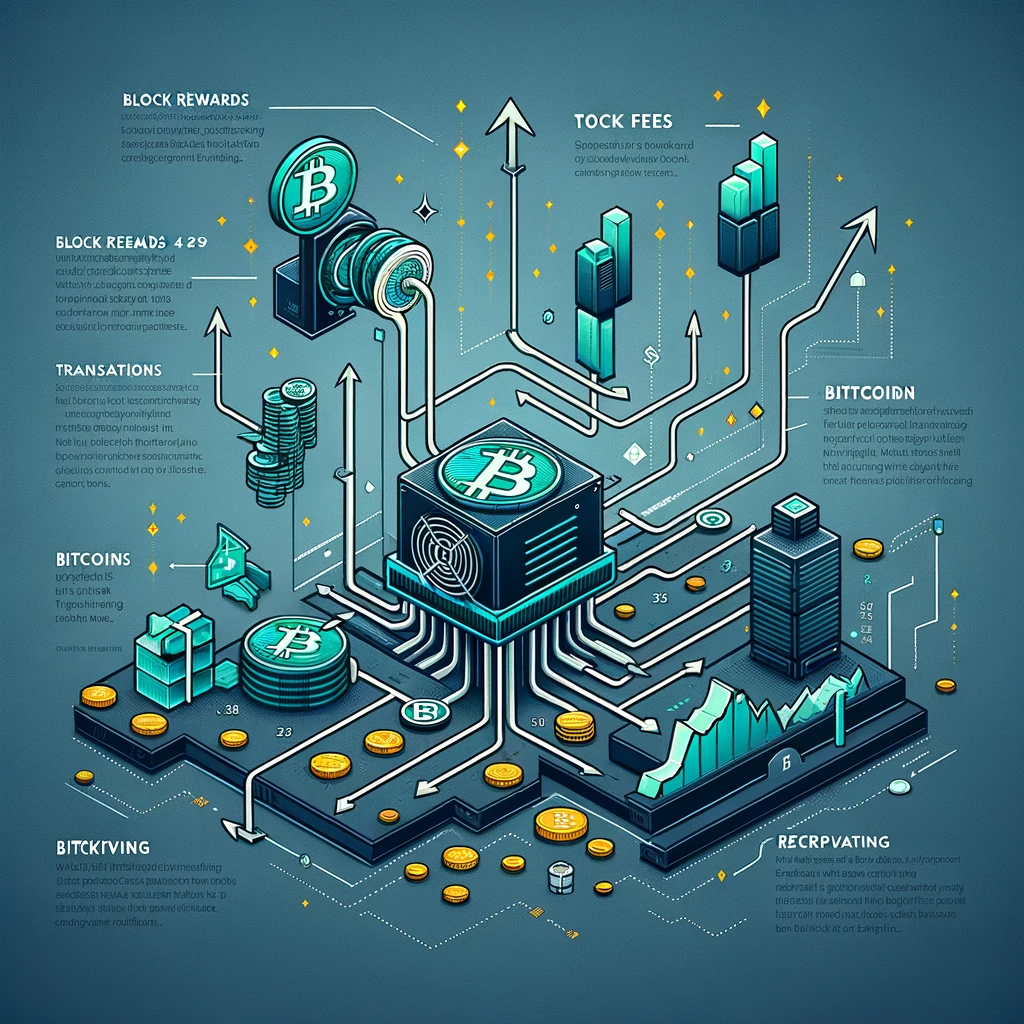The world of Bitcoin, with its decentralized ledger and peer-to-peer ethos, has captivated the imagination of the tech-savvy and investors alike. At the heart of its allure is the mining process, a sophisticated dance of computational exertion that serves to both create new bitcoins and secure the network. This article delves into the dual incentives for miners — block rewards and transaction fees — and explores the theoretical link between these incentives and Bitcoin’s potential price appreciation.
The Incentive Model of Bitcoin Mining:
Bitcoin miners are the steadfast guardians of the blockchain, verifying transactions and bundling them into blocks. Their reward? A twofold incentive system. Initially, miners are drawn by the allure of block rewards, a set number of bitcoins granted for each block mined. These rewards are pre-determined and decrease by half approximately every four years in an event known as the “Bitcoin halving.” The second part of the incentive comes in the form of transaction fees, paid by users to prioritize their transactions on the network.
The Halving and Scarcity:
The halving is a core component of Bitcoin’s economic model, instilling scarcity by reducing the flow of new bitcoins. This artificial scarcity is akin to a central bank tightening monetary policy, except it’s written into code, not subject to human discretion. The halving events are anticipated with great interest, as they historically correlate with an increase in Bitcoin’s price. This isn’t just happenstance; it’s a reflection of classical supply and demand dynamics. As new coins become rarer, if demand persists or grows, prices are theoretically poised to rise.
Transaction Fees as a Long-Term Incentive:
As block rewards dwindle, transaction fees are expected to take the relay baton to incentivize miners. If Bitcoin continues on its path to becoming a premier digital asset, network activity is expected to rise, leading to higher fees. This self-sustaining economic model ensures miners are rewarded for their crucial role in network maintenance, even as block rewards sunset.
The mining equilibrium maintains network security, with recent reports indicating miners made $184 million in Q2 2023, surpassing 2022’s total, and daily earnings of around $63 million from fees. Bloomberg reports a 60% increase in miner revenue to $2.5 billion in Q4.
Linking Price Theory to Mining and Network Security:
The security of the Bitcoin network is paramount, protected by the collective computing power of miners. Should mining become unprofitable due to a price decline, the fear is that miners will exit, reducing the network’s security. However, the built-in incentives create a balancing act. As miners drop off, the difficulty of mining adjusts, potentially making it profitable again for the remaining miners. Moreover, a secure, well-functioning network heightens user trust and adoption, potentially driving the price upward.
Why Bitcoin Might See an Upswing in Value:
If we subscribe to the thesis that reduced block rewards lead to scarcity, and that transaction fees will rise with increased network usage, we can deduce a potential upward trajectory for Bitcoin’s value. The reasoning is twofold: scarcity implies value, and a secure network commands trust and participation.
As Bitcoin matures and integrates into financial systems, its characteristics as a store of value and hedge against inflation become more pronounced. In an era of expansive monetary policies, Bitcoin’s predefined issuance schedule presents a stark contrast, possibly enticing investment flows that support higher prices.
In the intricate tapestry of economic incentives that underpin Bitcoin, we find a compelling case for its value appreciation. The miners, incentivized by both block rewards and fees, underwrite a robust and secure network. This network, in turn, fosters user confidence, which could lead to increased adoption and demand. While the future is never certain, and many variables come into play, the interplay between mining dynamics and Bitcoin’s value remains a fundamental pillar supporting bullish sentiment for the world’s first cryptocurrency.
The Synergy of Mining Incentives and Fee Structures: A Catalyst for Bitcoin’s Value Appreciation was originally published in The Dark Side on Medium, where people are continuing the conversation by highlighting and responding to this story.
